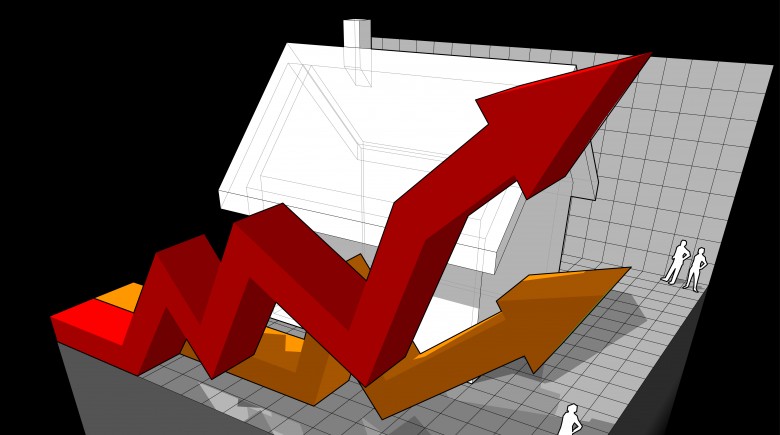Home prices are rising. Is it your fault?
I say “fault” because a recent report by Bloomberg Business Week found that house prices these days are “on fire.” They have made the largest 12-month gain since April of 2006. Prices are up almost 11% from March of last year.
Naturally enough, reporters speculate that this might mean another housing bubble. Yes? Oh, no, please.
This calls to mind the law of unintended consequences which rules that outcomes are not always the ones intended by actions. This can be positive or negative but regardless, it is often not what was intended.
But is it your fault (Mr. and Mrs. small investor) that you are involved as a small time owner?
Let’s take a closer look. But even more critical: what does this mean for you as a small buyer?
In the process, we’ll find out more about you.
Perhaps you didn’t know (and Bloomberg reminds us) that 80% of all sales are driving by first-time and existing homeowners. So that in normal times leaves the remaining one fifth of sales to investors, according to the latest Campbell/Inside Mortgage Finance Housing Pulse Tracking Survey.
But these are not normal times.
However, the survey found that tight lending standards have contained first-time buyers to about 35 percent of the market, with the rest coming from existing homeowners.
You probably know this already but mom-and-pop investors have long been a staple of the market, buying and renting homes and later selling them (one or more at a time). But Wall Street firms have entered the game. Major institutional investors have been buying up forecloses and low-cost properties by the thousands and doing what smaller investors do: rehab, rent, then sell.
But studies show that investors continue to dominate the market for forecloses that need repairs (two-thirds of damaged REO sales, according to studies). Regular buyers seldom get into this market because they don’t have the time or the wherewithal to spend necessary repair dollars.
Bloomberg and others point out that investors seldom drive up prices or engage in bidding wars (it takes large companies with heavy cash reserves to do that). Investors tend to be frugal and generally more careful of what they buy than institutions. Individuals usually bid low and often pay cash.
They still have an impact on the market because they take inventory from it. That limits the supply of property for owner-occupants, of course.
But since individuals bid lower, their influence on the market is more limited than larger institutions.
Forecloses and short sales are dwindling, according to various studies.
So in the end, small investors don’t drive up the price (hopefully, you’re not too worried about it). But one thing to keep in mind in the current situation is that cash continues to be one of your few advantages over the well-heeled institutions.
It’s something you should not forget.
Home prices are rising. Is it your fault?
I say “fault” because a recent report by Bloomberg Business Week found that house prices these days are “on fire.” They have made the largest 12-month gain since April of 2006. Prices are up almost 11% from March of last year.
Naturally enough, reporters speculate that this might mean another housing bubble. Yes? Oh, no, please.
This calls to mind the law of unintended consequences which rules that outcomes are not always the ones intended by actions. This can be positive or negative but regardless, it is often not what was intended.
But is it your fault (Mr. and Mrs. small investor) that you are involved as a small time owner?
Let’s take a closer look. But even more critical: what does this mean for you as a small buyer?
In the process, we’ll find out more about you.
Perhaps you didn’t know (and Bloomberg reminds us) that 80% of all sales are driving by first-time and existing homeowners. So that in normal times leaves the remaining one fifth of sales to investors, according to the latest Campbell/Inside Mortgage Finance Housing Pulse Tracking Survey.
But these are not normal times.
However, the survey found that tight lending standards have contained first-time buyers to about 35 percent of the market, with the rest coming from existing homeowners.
You probably know this already but mom-and-pop investors have long been a staple of the market, buying and renting homes and later selling them (one or more at a time). But Wall Street firms have entered the game. Major institutional investors have been buying up forecloses and low-cost properties by the thousands and doing what smaller investors do: rehab, rent, then sell.
But studies show that investors continue to dominate the market for forecloses that need repairs (two-thirds of damaged REO sales, according to studies). Regular buyers seldom get into this market because they don’t have the time or the wherewithal to spend necessary repair dollars.
Bloomberg and others point out that investors seldom drive up prices or engage in bidding wars (it takes large companies with heavy cash reserves to do that). Investors tend to be frugal and generally more careful of what they buy than institutions. Individuals usually bid low and often pay cash.
They still have an impact on the market because they take inventory from it. That limits the supply of property for owner-occupants, of course.
But since individuals bid lower, their influence on the market is more limited than larger institutions.
Forecloses and short sales are dwindling, according to various studies.
So in the end, small investors don’t drive up the price (hopefully, you’re not too worried about it). But one thing to keep in mind in the current situation is that cash continues to be one of your few advantages over the well-heeled institutions.
It’s something you should not forget.







